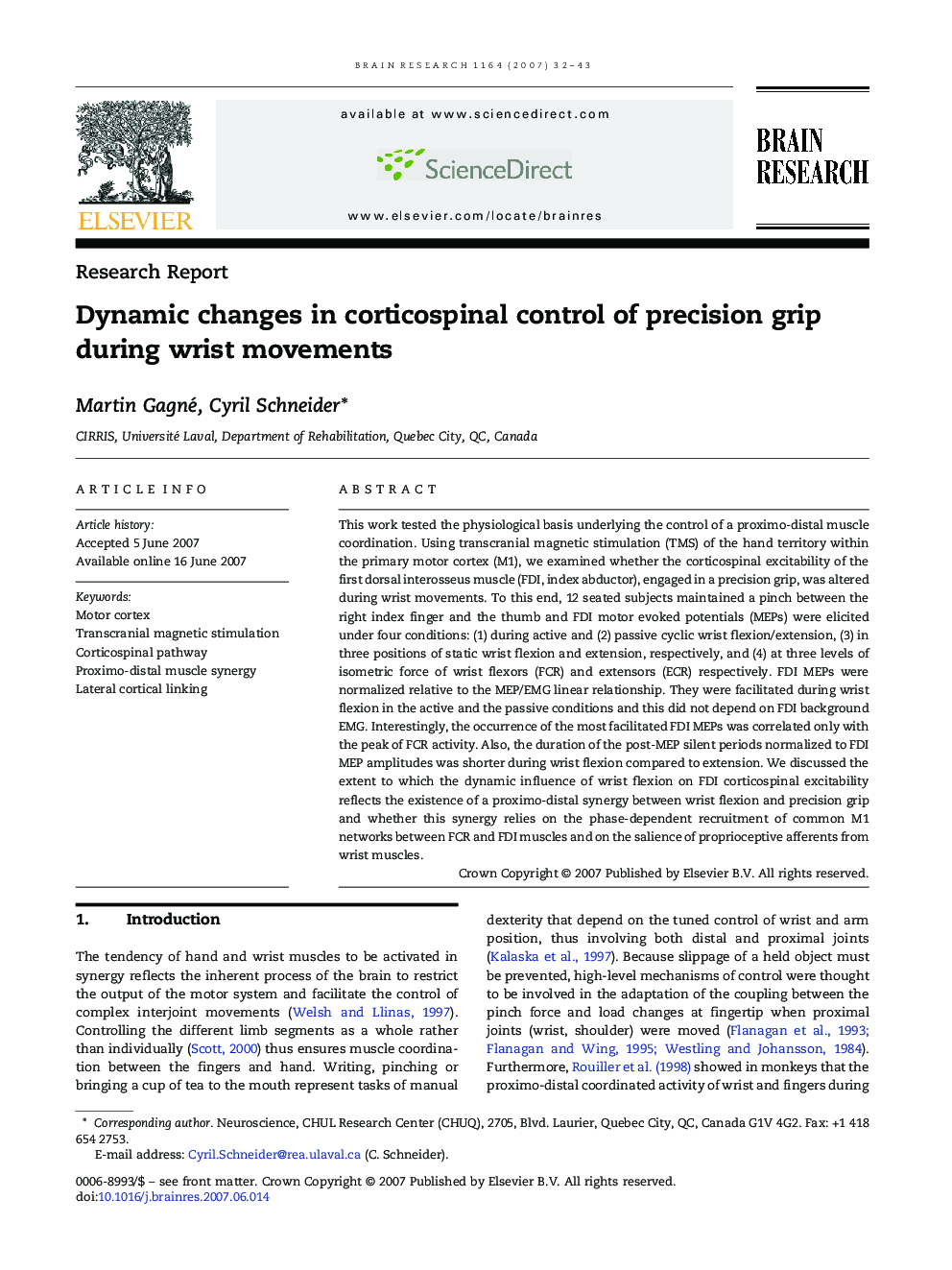| Article ID | Journal | Published Year | Pages | File Type |
|---|---|---|---|---|
| 4330814 | Brain Research | 2007 | 12 Pages |
This work tested the physiological basis underlying the control of a proximo-distal muscle coordination. Using transcranial magnetic stimulation (TMS) of the hand territory within the primary motor cortex (M1), we examined whether the corticospinal excitability of the first dorsal interosseus muscle (FDI, index abductor), engaged in a precision grip, was altered during wrist movements. To this end, 12 seated subjects maintained a pinch between the right index finger and the thumb and FDI motor evoked potentials (MEPs) were elicited under four conditions: (1) during active and (2) passive cyclic wrist flexion/extension, (3) in three positions of static wrist flexion and extension, respectively, and (4) at three levels of isometric force of wrist flexors (FCR) and extensors (ECR) respectively. FDI MEPs were normalized relative to the MEP/EMG linear relationship. They were facilitated during wrist flexion in the active and the passive conditions and this did not depend on FDI background EMG. Interestingly, the occurrence of the most facilitated FDI MEPs was correlated only with the peak of FCR activity. Also, the duration of the post-MEP silent periods normalized to FDI MEP amplitudes was shorter during wrist flexion compared to extension. We discussed the extent to which the dynamic influence of wrist flexion on FDI corticospinal excitability reflects the existence of a proximo-distal synergy between wrist flexion and precision grip and whether this synergy relies on the phase-dependent recruitment of common M1 networks between FCR and FDI muscles and on the salience of proprioceptive afferents from wrist muscles.
